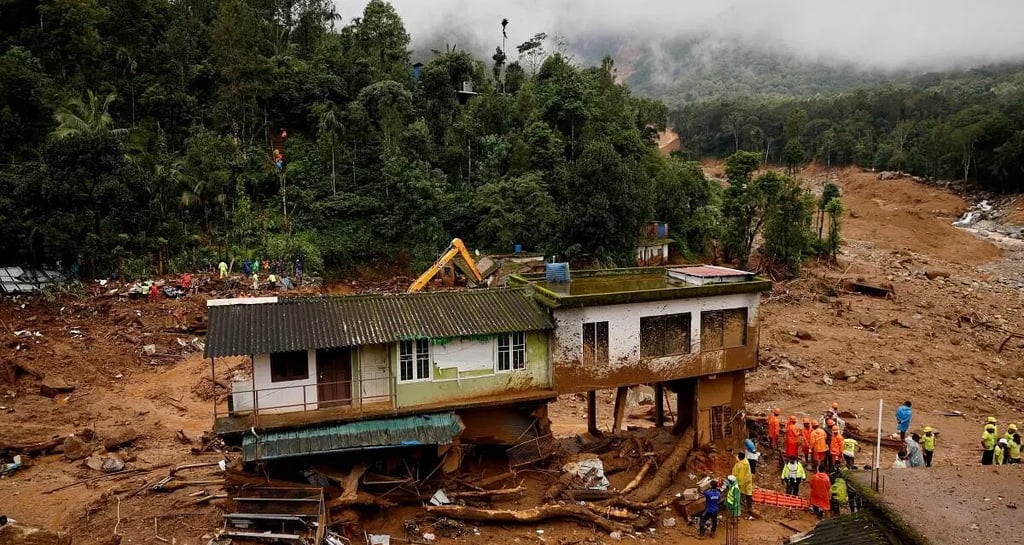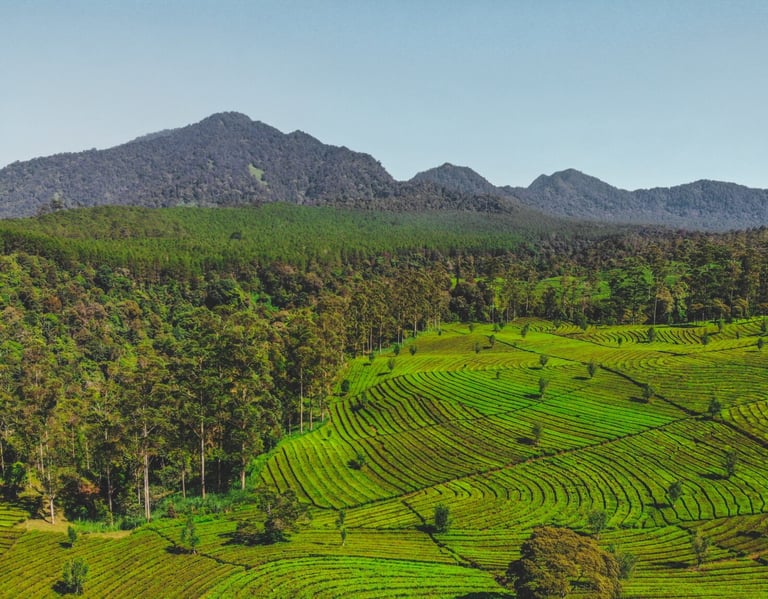Wayanad Landslides: A Deforestation-Caused Catastrophe
On the morning of 30 July 2024, the district Wayanad, and indeed the whole South Indian state of Kerala, woke up to the appalling news of one of the deadliest natural disasters it had ever witnessed.


On the morning of 30 July 2024, the district Wayanad, and indeed the whole South Indian state of Kerala, woke up to the appalling news of one of the deadliest natural disasters it had ever witnessed. At the site of the disaster, which included the two villages Mundakkai and Chooralmala, there was complete chaos, confusion, and shock. Moreover, it was the site of the absolute annihilation of these two villages where the lives, livelihoods, and dreams of hundreds of people, most of them from disadvantaged socio-economic backgrounds had flourished. The water erupted in all its fury, brought down boulders and mud, and uprooted trees down the mountain, destroying lives, homes, and hopes.
The local school Vellarmala Government School alone lost 32 students. “We are yet to come to terms with the shock. I don't know how I will face my children (pupils)”, Unnikrishnan, the heartbroken Headmaster of the school tells the media in a shaking voice.
The landslide struck near the origin of the Iruvanjippuzha river which in turn resulted in excess water flow and flash floods. The two villages Mundakkai and Chooralmala were completely wiped out leaving behind nothing but kilometers of a slurry of water, mud, rock and other debris. According to the First Information Report prepared by the Geological Survey of India, the velocity of debris flow was 57 m/s, about 5 times greater than that of the “extremely rapid” category.
Photo courtesy of Reuters


A topographical and geomorphological study conducted by The Cochin University of Science and Technology suggests that major deforestation that happened in Wayanad’s hilly regions to make space for tea plantations has adversely affected the topology of the area. A similar observation was made in another study published in 2011 by The International Journal of Environmental Research and Public Health on deforestation in Wayanad.
The tragedy therefore has sparked debates on the effects of climate change on Kerala (and Western Ghats mountain ranges in general). The Western Ghats Ecology Expert Panel (popularly called Gadgil Committee Report), which had recommended that 64% of Western Ghats be declared an Ecologically Sensitive Area with varying degrees of protection, is being discussed after almost a decade and a half.
Other studies also confirm that Kerala is particularly susceptible to ecological disasters as a result of the change in climate patterns. A study recently conducted by the World Weather Attribution in which Researchers from India, Sweden, the USA, and the UK had collaborated reiterates that this is a result of a rise in temperatures and climate change. Mariam Zachariah, one of the researchers suggests that these landslides are a catastrophic example of climate change playing out in real time.
It has been maintained that excessive rains in a single day have caused the Landslides but the disaster was further aggravated by deforestation and unscientific land use practices slide quarrying, mining, and illegal construction. In recent years, cloudbursts and rains of unnaturally high intensity and frequency have been reported in the regions that are in proximity to the Arabian Sea. These extreme weather events are directly linked to global warming and excess heating of the sea surface, which leads to the formation of massive, moisture-laden cumulo-nimbus clouds that rapidly condense and result in cloudbursts or heavy rainfall.
These incidents that occurred in Wayanad should not be recurrent. For that, spreading climate awareness and ensuring climate justice is imperative. While governments and corporate companies do have a responsibility to create and execute policy-level changes, as individuals we too have to raise our voices, adopt sustainable living, and take small individual steps to counter the climate crisis.
References:
https://en.m.wikipedia.org/wiki/2024_Wayanad_landslides
https://frontline.thehindu.com/environment/wayanad-mundakkai-chooralmala-landslides-army bodies-kerala-climate-change-impact-gadgil-western-ghats/article68528102.ece
https://www.worldweatherattribution.org/landslide-triggering-rainfall-made-more-intense-by human-induced-climate-change-devastating-highly-vulnerable-communities-in-northern-kerala/
https://www.downtoearth.org.in/climate-change/wayanad-landslides-without-global-warming rainfall-would-have-been-11-less-intense-finds-attribution-study
Photo courtesy of Devon Daniel/Unsplash
